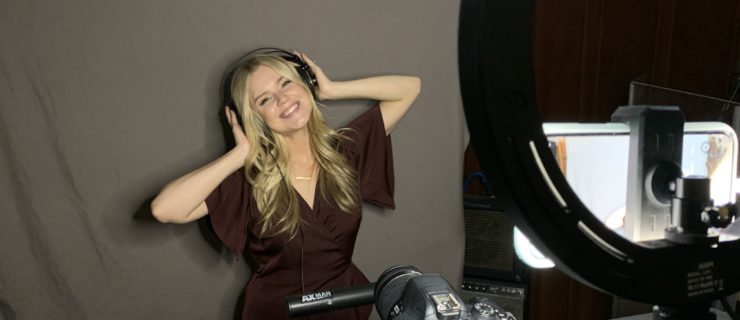AMDA’s 4 Tips for Acing Your Next Audition
Ah, audition day. The flurry of new choreography, the long lines of dancers, the wait for callbacks. It’s an environment dancers know well, but it can also come with great stress. Learning how to be best prepared for the big day is often the key to staying calm and performing to your fullest potential (and then some).
This concept is the throughline of the curriculum at American Musical and Dramatic Academy, where dance students spend all four years honing their audition skills.
“You’re always auditioning,” says Santana Trujillo, AMDA’s dance outreach manager and a graduate of its BFA program. On campus in Los Angeles and New York City, students have access to dozens of audition opportunities every semester.
For advice on how dancers can put their best foot forward at professional auditions, Dance Magazine recently spoke with Trujillo, as well as AMDA faculty members Michelle Elkin and Genevieve Carson. Catch the whole conversation below, and read on for highlights.
1. Do Your Research
Every audition, no matter the style, should start with research. Elkin, who works professionally as a choreographer and a dancer for film, television and theater, tells her students to focus on the big picture. Ask yourself: “What character am I auditioning for?” Once you’ve found your storyline, look behind the scenes: Who is choreographing? What kind of artists have they hired before, and what will you highlight in yourself to show them you’re up to the task?
Carson, who served as artistic director of the Los Angeles Contemporary Dance Company from 2016–20, says the preparation looks similar even if you’re working in concert dance. “The only way you’re going to understand the ethos of the company you’re auditioning for is by putting in the time,” she says. Just like you’d research the specific character of a commercial role, look at the artistic director’s bio. Study the movement vocabulary of the company you’re interested in and reflect on how you can demonstrate that you’re prepared to take on its rep.
2. Know the Expectations
That said, there are still differences between commercial and concert auditions, so being familiar with each will help make the process less overwhelming. Television and film move faster than theater or concert auditions, says Elkin, “especially if you’re a union member,” because the panel may only have an hour to see people. Build your skills in learning choreography quickly, and be ready to dance at a moment’s notice. In theater, there’s “a little bit more time to see people dance longer, sing and read sides,” says Elkin. At AMDA, she teaches her students to be prepared for both situations: The more flexible you are, the more opportunities will come your way.
Auditioning for a concert-dance company will be a longer process, says Carson. “There’s a lot more than the technical prowess of a dancer that an artistic director looks for,” she says. When she directed the Los Angeles Contemporary Dance Company, Carson was drawn to auditionees who were versatile, open-minded and had a collaborative spirit. When you’re hoping to join a company, she says, you’ll want to demonstrate that you’re interested in the whole creative process—not just the final result. At AMDA, concepts like these are built into the curriculum: Carson leads classes that expose students to a range of different choreographers and working methods every semester.

3. Use Technology to Your Benefit
Elkin, who has worked in the commercial-dance industry since childhood, continues to watch the ways that technology transforms the audition process, especially as we move through the pandemic. “A lot of the first initial calls are going through self-tapes,” she says. “The big pivot to being online created this wonderful experience to figure out how to shoot, how to be on camera, and how to slate and submit that information.”
Elkin thinks that most first-round auditions will continue to be online, even post-pandemic, but the change isn’t necessarily for the worse—dancers can save time and money by eliminating the need to travel and wait in long lines before they’re seen. Right now, she works to make sure her students at AMDA feel comfortable and confident presenting their best selves on camera.
4. Look Past the Binary
“There’s cross-pollination happening between the commercial and concert dance worlds,” says Carson. At AMDA, students are taught to “dive into each world without hesitation.” The result creates an environment where students are able to change or vary their career paths, leading to more artists who are increasingly open-minded in how they approach dance.
Trujillo, for example, started at AMDA wanting to be a Broadway-style singer, but the mentorship she found in the dance department guided her toward hip-hop and heels dancing instead. “I’m honored to be on faculty at AMDA because of the forward thinking that goes into the programs we create,” says Carson. “I feel like we’re constantly innovating.”




